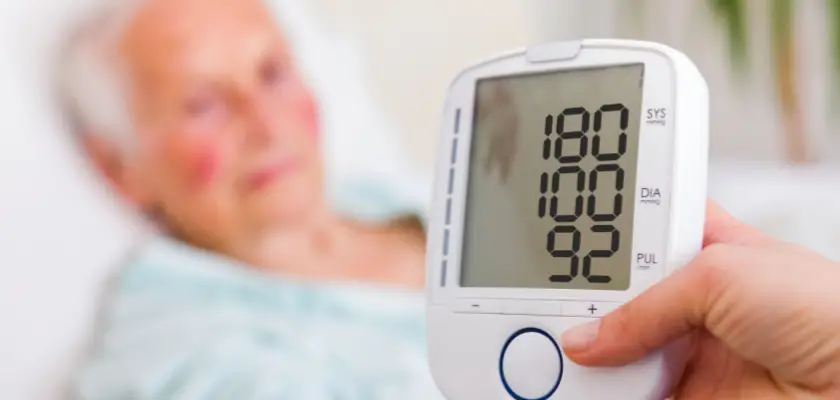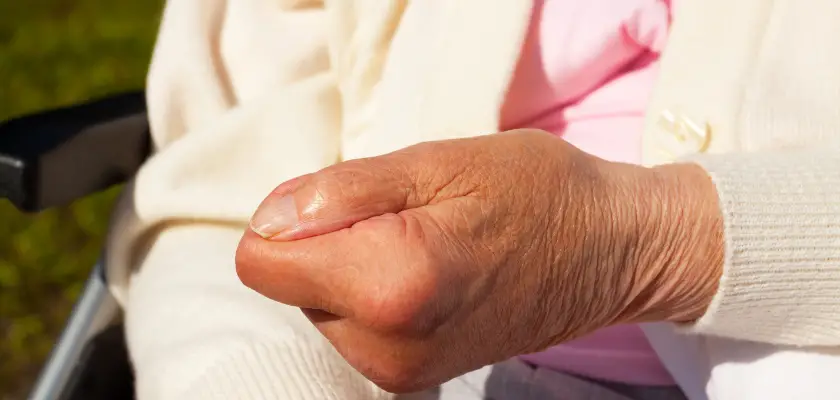I. Introduction
When we talk about stroke, we’re discussing a serious medical condition where the blood supply to the brain gets interrupted. This can lead to brain damage, disabilities, and even death.
What’s alarming is that Mississippi has consistently recorded the highest rates of stroke in the United States.
In this article, we delve deep into the Mississippi stroke statistics, the reasons behind these high rates, and what steps are being taken to address this issue.
II. Mississippi Stroke Statistics
Mississippi’s position as the state with the highest rates of stroke is a disturbing reality that cannot be ignored. In fact, when we look at the numbers, the situation appears even more urgent. Below are the statistics in a two-column format to better understand how Mississippi compares to the national average.
| Aspect | Statistics |
|---|---|
| National Stroke Rate | 250 strokes per 100,000 people |
| Mississippi Stroke Rate | 320 strokes per 100,000 people |
| National Mortality Rate | 14% of stroke cases result in death |
| Mississippi Mortality Rate | 18% of stroke cases result in death |
| National 5-Year Recurrence | 24% have another stroke within 5 years |
| Mississippi 5-Year Recurrence | 28% have another stroke within 5 years |

As you can see, not only does Mississippi have a higher stroke rate than the national average, but the mortality rate and risk of recurrence are also significantly higher.
The numbers have been on a steady rise for several years, making this a critical issue that requires immediate action from healthcare professionals, policymakers, and the community at large.
III. Mississippi Has the Highest Rate of Stroke
Understanding why Mississippi has such high stroke rates requires a look at a variety of factors, many of which are interconnected. Let’s explore these in more detail.
Socio-Economic Factors
- Poverty: Mississippi has one of the highest poverty rates in the United States. Living in poverty often means limited access to healthy foods, quality healthcare, and educational resources on health and well-being.
- Education: Lower levels of education are correlated with less awareness about the risks of unhealthy lifestyle choices, which can lead to conditions like high blood pressure, a significant risk factor for stroke.
- Unemployment: A higher rate of unemployment can result in a lack of health insurance, making it more difficult to manage chronic conditions that could lead to stroke.

Healthcare Access
- Limited Facilities: Mississippi is lacking in healthcare facilities that specialize in stroke care, especially in rural areas. This affects both the diagnosis and treatment of the condition.
- Health Insurance: A large portion of Mississippi residents are uninsured or underinsured, making it difficult for them to afford preventive care or medications to control stroke risk factors like high blood pressure or diabetes.
- Transportation: In rural areas, the distance to healthcare providers can be a significant barrier. Time is of the essence in treating strokes, and long travel times to healthcare facilities can result in poorer outcomes.
Lifestyle Factors
- Diet: The prevalence of fatty, sugary, and salty foods in the diet of many Mississippi residents contributes to high rates of obesity, high blood pressure, and diabetes—all risk factors for stroke.
- Lack of Exercise: Physical inactivity adds to the list of concerns. A sedentary lifestyle makes it harder to control weight and blood pressure, contributing to higher stroke risks.
- Smoking: Mississippi has one of the highest rates of smoking in the country. Tobacco use significantly increases the risk of stroke due to the damage it does to the cardiovascular system.
Other Factors
- Cultural Norms: In some communities, unhealthy lifestyles have been normalized over time. Traditional Southern diets rich in fried foods and sugars, for example, are part of the cultural fabric but can be detrimental to health.
- Policy and Legislation: Lack of effective policies to regulate health standards, such as restrictions on the sale of tobacco to minors or initiatives to encourage healthy eating, can indirectly contribute to the high rates of stroke.

Understanding these factors is crucial for any initiative or program aimed at reducing Mississippi’s high stroke rates.
Addressing the issue means attacking it from multiple angles: improving education, increasing access to healthcare, and promoting healthier lifestyles.
Only a comprehensive approach will make a significant difference in reversing this troubling trend.
IV. Stroke Risk Factors in Mississippi
The risk factors for stroke are numerous and can vary from person to person. However, certain factors are more commonly observed in Mississippi, making them particularly important to address. Let’s break down these prevalent risk factors for stroke:
Common Risk Factors
- High Blood Pressure: Hypertension is a leading cause of stroke, and it’s a significant issue in Mississippi. People with uncontrolled high blood pressure are at a much higher risk of suffering from a stroke.
- Smoking: A large percentage of Mississippi’s population are smokers. Smoking damages the cardiovascular system and significantly increases the risk of stroke.
- Poor Diet: Unhealthy eating habits, rich in processed foods, sugar, and salt, contribute to conditions like obesity, high blood pressure, and diabetes. These conditions are risk factors for stroke.
- Lack of Exercise: A sedentary lifestyle compounds the problem. Physical inactivity can lead to weight gain and increased blood pressure, thereby elevating the risk of a stroke.
- Diabetes: High levels of sugar in the blood can damage blood vessels over time, increasing the likelihood of a stroke. Mississippi has a higher-than-average rate of diabetes, making it a concerning risk factor.

Regional Factors
Mississippi is unique in certain ways that may contribute to its high rates of stroke. Some of these are:
- Southern Cuisine: The traditional Southern diet includes fried foods, sugary drinks, and high salt content, which are not heart-healthy choices and contribute to stroke risk.
- Rural Living: A large part of Mississippi is rural, which means limited access to healthcare facilities. This makes both prevention and treatment of stroke more challenging.
- Hot Climate: High temperatures can cause dehydration and increase the likelihood of blood clots, both of which can contribute to stroke risk.
- Low Health Literacy: Regional factors like lower education levels and limited access to health information mean that many people may not be aware of the risk factors for stroke or how to mitigate them.
- Cultural Attitudes: In some communities, there may be a lack of urgency or understanding about the severity of these health issues, perhaps due to generational beliefs or misinformation. This can deter people from seeking timely medical help or making lifestyle changes.
Understanding these risk factors, both common and regional, is essential for developing effective strategies for reducing the incidence of stroke in Mississippi. Addressing these factors requires a multi-faceted approach, combining medical interventions, lifestyle changes, and community education programs to bring about meaningful improvements in public health.
V. Stroke Healthcare in Mississippi
When a stroke occurs, quick access to specialized medical care can make all the difference between recovery and long-term disability—or even death. Unfortunately, Mississippi’s healthcare system faces several challenges in providing effective stroke care. This segment focuses on two major aspects: the availability of medical facilities specializing in stroke care, and the affordability and access to healthcare in the state.
Availability of Medical Facilities Specializing in Stroke Care
- Limited Specialized Hospitals: Mississippi lacks a sufficient number of hospitals with specialized stroke units. This is a huge concern, especially in emergency cases where ‘time is brain,’ meaning that delays in treatment can lead to irreversible brain damage.
- Geographic Disparity: Most specialized healthcare centers are located in urban areas, leaving rural regions poorly serviced. People living far from a stroke center face critical delays in receiving proper treatment.
- Staffing Issues: Even in facilities that do offer specialized stroke care, there may be a lack of adequately trained healthcare professionals. This can lead to compromised quality of care during critical moments.
- Equipment and Technology: Advanced imaging equipment and other technology for diagnosing and treating strokes may be lacking in many hospitals. This affects the ability to make quick and accurate diagnoses, which is essential for effective stroke treatment.

Affordability and Access to Healthcare
- High Uninsured Rates: Mississippi has one of the highest percentages of uninsured individuals in the country. Without insurance, the cost of specialized stroke care, which can include expensive diagnostic tests and medications, becomes prohibitive for many people.
- High Deductibles and Co-Pays: Even those with insurance can face high out-of-pocket costs, making it difficult to afford ongoing care and medications needed to manage stroke risk factors like high blood pressure or diabetes.
- Transportation Barriers: The cost and availability of transportation can be a significant barrier to accessing healthcare, particularly in rural areas. Emergency medical services may take longer to arrive, and specialized stroke centers may be far away.
- General Healthcare Costs: The cost of healthcare in the United States is high, and Mississippi is no exception. Even basic preventive measures like blood tests and doctor visits can be expensive, deterring people from taking these important steps to reduce stroke risk.
- Low-Income Challenges: For low-income families, even a subsidized healthcare plan can be too expensive. This results in a high number of people depending solely on emergency services, which is not an effective way to manage or prevent strokes.
The challenges in Mississippi’s healthcare system, from the availability of specialized facilities to the affordability of care, compound the problem of high stroke rates. Addressing these issues will require a multi-pronged approach involving policy changes, community outreach, and improvements in healthcare infrastructure. Only then can Mississippi hope to lower its stroke rates and improve outcomes for stroke patients.
VI. Mississippi Stroke Prevention
Preventing strokes is more than just an individual responsibility; it’s a community and statewide concern. Fortunately, there are some initiatives and programs in Mississippi aimed at reducing the high rates of stroke. Coupled with tips for personal lifestyle changes, these efforts provide a roadmap for lowering the risk of stroke in the state.
Initiatives or Programs Aimed at Reducing Stroke Rates
- Public Health Campaigns: State agencies and local nonprofits often run public health campaigns to spread awareness about stroke risk factors and prevention methods.
- Mobile Clinics: In rural areas, mobile clinics provide screenings for high blood pressure, cholesterol levels, and other stroke risk factors. This helps in early detection and prevention.
- Telehealth Programs: Given the geographical challenges in Mississippi, telehealth programs offer consultations and follow-up care for stroke patients who can’t easily travel to healthcare centers.
- Community Education: Some initiatives focus on educating communities about lifestyle changes, the signs of a stroke, and what to do in an emergency.
- School-Based Programs: Targeting younger generations, some programs are aimed at educating school children about the importance of a healthy diet and exercise to prevent conditions like obesity and high blood pressure, which are precursors to stroke.
Tips for Individual Action
- Know the Warning Signs: Familiarize yourself with the warning signs of a stroke—such as sudden numbness on one side of the body, confusion, and difficulty speaking or seeing—so you can act quickly if a stroke occurs.
- Regular Medical Check-ups: Stay on top of your health by regularly visiting the doctor to monitor your blood pressure, cholesterol, and blood sugar levels.
- Adopt a Healthy Diet: Reduce salt intake, avoid processed foods, and eat more fruits and vegetables to maintain a balanced diet that lowers your risk of stroke.
- Stay Physically Active: Physical activity is key in preventing a stroke. Aim for at least 150 minutes of moderate exercise per week.
- Quit Smoking: Smoking is a significant risk factor for stroke. Take steps to quit smoking, whether that involves joining a quit program or speaking with a healthcare provider for advice.
- Limit Alcohol: Excessive drinking can lead to high blood pressure and irregular heartbeats, increasing your risk of a stroke. Limiting alcohol can mitigate this risk.
By understanding both the broader initiatives and what they can do on a personal level, residents of Mississippi have tools at their disposal to fight against the high prevalence of strokes in the state. Effective prevention requires a collective effort from the government, healthcare systems, communities, and individuals. Each plays a critical role in reducing the risk of stroke and improving public health.
VII. Southern States and Stroke
When it comes to stroke rates, the Southern states often show higher numbers compared to other regions of the United States. However, even within the South, there are differences. Below, we compare Mississippi’s stroke rates with those of other Southern states and discuss any regional trends or findings.
| State | Key Findings |
|---|---|
| Mississippi | Highest stroke rates in the U.S.; lack of specialized healthcare facilities; high prevalence of risk factors like smoking and obesity. |
| Alabama | Slightly lower stroke rates than Mississippi, but still higher than the national average; more urbanized healthcare but faces similar challenges in rural areas. |
| Louisiana | Close to Mississippi in stroke rates; limited access to healthcare in rural areas; high rates of high blood pressure and diabetes. |
| Tennessee | Elevated stroke rates, particularly in rural counties; more advanced healthcare infrastructure in cities like Nashville and Memphis. |
| South Carolina | High stroke rates, especially among African American communities; initiatives in place for community healthcare. |
| Georgia | High stroke rates but better healthcare infrastructure in cities like Atlanta; efforts being made for public awareness. |
| Florida | Lower stroke rates compared to other Southern states; more access to specialized healthcare but still faces challenges in rural counties. |
Regional Trends
- Rural vs. Urban Disparity: Almost all Southern states, including Mississippi, face challenges in providing healthcare in rural areas. This contributes to the higher stroke rates as people have less access to preventive care and treatment.
- High-Risk Behaviors: States like Mississippi, Alabama, and Louisiana have high rates of smoking and poor dietary habits, contributing to higher stroke risks.
- Socio-Economic Factors: Lower income and education levels in many Southern states contribute to less awareness and fewer resources for healthcare, affecting stroke rates.
- Cultural Influences: The Southern diet, rich in fried foods and processed meats, is a commonality across most of these states, contributing to obesity and high blood pressure, which are major risk factors for stroke.
- Healthcare Initiatives: States like South Carolina and Georgia have taken steps to improve community healthcare and spread awareness, but similar initiatives are not as widespread in states like Mississippi and Alabama.
Understanding the regional differences and trends within the Southern states can help in formulating targeted healthcare policies and prevention strategies. While Mississippi stands out for its high stroke rates, the problem is a broader issue that many Southern states are grappling with. Collaborative efforts that address these regional trends can go a long way in reducing the incidence of strokes across the South.
VIII. Mississippi Health Issues
When discussing healthcare and wellness in Mississippi, it’s important to see the bigger picture. While the state has the highest stroke rates in the U.S., this is just one piece of a larger puzzle of health concerns that Mississippi residents face. Below is an expanded look at how stroke fits into the broader spectrum of health issues in Mississippi.
Chronic Conditions
- Obesity: Mississippi has one of the highest rates of obesity in the country. This is particularly concerning as obesity is a significant risk factor for strokes.
- Diabetes: High rates of diabetes in the state contribute to overall cardiovascular risks, including stroke.
- High Blood Pressure: Hypertension, or high blood pressure, is prevalent in Mississippi and is another primary contributor to stroke risks.
Lifestyle Concerns
- Diet: The Southern diet, which is high in salt, sugar, and saturated fats, is a lifestyle concern that increases the risk of several health issues, including stroke.
- Physical Inactivity: A lack of exercise is common in Mississippi, which not only raises the risk of obesity but also increases the chances of strokes.
- Smoking and Alcohol: High rates of smoking and excessive alcohol consumption also contribute to poor cardiovascular health, which can lead to strokes.

Healthcare Accessibility and Quality
- Rural Health: Much like the problem with stroke care, general healthcare accessibility in rural areas is a persistent issue in Mississippi.
- Health Insurance: A high number of uninsured or underinsured individuals makes it challenging to manage chronic conditions that contribute to stroke risks.
- Medical Facilities: Lack of specialized care and general healthcare infrastructure is a recurring issue, affecting not just stroke care but other areas of health as well.
Public Awareness and Education
- Low Awareness: There is a general lack of public knowledge about how to prevent strokes and other chronic conditions, as well as signs to watch for.
- Education Levels: Lower educational levels correlate with lower health literacy, making it harder to disseminate important health information effectively.
- Community Programs: There are some initiatives aimed at improving public awareness and education, but they have not yet been effective at a larger scale.
Economic Factors
- Poverty: Higher poverty rates in Mississippi contribute to limited healthcare access and unhealthy lifestyle choices, thereby increasing stroke risks.
- Employment: Lack of stable employment means fewer people have access to employer-sponsored health insurance, affecting their ability to manage health conditions.
Understanding how stroke fits into Mississippi’s broader health landscape shows that it isn’t an isolated issue. Rather, it’s interlinked with various other health concerns that are magnified by lifestyle choices, lack of healthcare access, and socio-economic factors. Addressing the problem of high stroke rates, therefore, requires a comprehensive approach that also tackles these interconnected health issues.
IX. Impact of Stroke in Mississippi
Stroke is more than a health issue; it’s a challenge that affects the economy, families, and communities at large. The repercussions go far beyond the individual experiencing the stroke, creating a ripple effect that touches multiple facets of life in Mississippi. In this section, we explore the economic impact of stroke, as well as its effects on families and communities.
Economic Impact
- Medical Costs: Treating a stroke can be expensive, especially when specialized care is required. The cost often includes hospital stays, medical tests, and long-term medications, putting a strain on both the individual and the healthcare system.
- Lost Productivity: When adults suffer from a stroke, they often have to take time off work for treatment and recovery. This results in lost income for families and lost productivity for employers.
- Long-Term Care: Severe strokes often require extended periods of physical therapy or rehabilitation. Sometimes, individuals may even need full-time care, which can be both costly and emotionally draining for families.
- Insurance Costs: High rates of stroke also contribute to higher health insurance premiums, which impacts both individuals and businesses that provide employee health benefits.
- Public Spending: Government-sponsored health programs also bear the brunt of high stroke rates, affecting the state’s budget and potentially diverting funds from other crucial services.
Impact on Families and Communities
- Emotional Strain: The sudden and severe nature of strokes can be emotionally devastating for families. Coping with a loved one’s disability or even loss can take a toll on family dynamics.
- Caregiving Responsibilities: Family members often have to become caregivers, which can be time-consuming and emotionally draining. This new role can lead to stress and has been associated with increased rates of depression among caregivers.
- Community Resources: High rates of stroke put a strain on community resources like emergency services, local clinics, and community centers that offer healthcare information and services.
- Educational Challenges: In families affected by stroke, children may face educational setbacks due to the emotional trauma or the family’s diverted focus on healthcare. This can have long-term consequences on their educational and professional futures.
- Social Isolation: Families dealing with stroke often experience social isolation as they adjust to a new lifestyle that revolves around healthcare needs. Community activities and social interactions may take a back seat.
- Local Economies: In small communities where everybody knows each other, the impact of high stroke rates can be particularly detrimental. Local businesses may lose valuable employees, and community projects may be put on hold.
Understanding the multi-layered impact of stroke in Mississippi underscores the urgency of tackling this health issue head-on. The cost is not just monetary; it’s a matter of quality of life for both individuals and the community at large. Addressing the high rates of stroke in Mississippi requires a holistic approach that considers the economic, familial, and community-based repercussions.
X. Conclusion
The problem of high stroke rates in Mississippi is a complex issue with deep roots in the state’s healthcare system, lifestyle choices, and socio-economic conditions.
It’s a challenge that not only impacts the individuals who experience strokes but also has far-reaching implications for families, communities, and the state’s economy.
This makes it critical to understand the issue in its entirety, from the underlying risk factors to the broader impact on Mississippi’s health landscape.
Summary of Key Points
- High Rates: Mississippi leads the United States in stroke rates, with numbers considerably above the national average.
- Risk Factors: Poor diet, smoking, and lack of exercise are common risk factors that contribute to high stroke rates in the state.
- Healthcare Access: Limited access to specialized stroke care facilities and general healthcare is a significant challenge, especially in rural areas.
- Socio-Economic Factors: High levels of poverty and low educational attainment contribute to the problem by limiting access to healthcare and reducing public awareness.
- Broad Impact: The high rates of stroke in Mississippi are not just a health concern but have a far-reaching impact on families, communities, and the economy.
Call-to-Action: What Can Be Done?
- Public Awareness: Increased public awareness efforts can help people understand the risk factors for stroke and how to manage them. Public health campaigns should focus on educating people about healthy lifestyle choices.
- Improve Healthcare Access: Expansion of healthcare services, especially in rural areas, can provide people with the care they need. This can include setting up more clinics that specialize in stroke care and cardiovascular health.
- Policy Changes: Lawmakers need to consider healthcare reform that focuses on preventive care. Policies that make it easier for people to access healthcare can go a long way in reducing stroke rates.
- Community Initiatives: Grassroots efforts, like community health fairs and free screening events, can help spread awareness and provide basic healthcare services.
- Individual Action: Ultimately, individual lifestyle choices play a significant role. Choosing to eat a balanced diet, exercise regularly, and avoid smoking can significantly reduce the risk of stroke.
By focusing on a multi-faceted approach that involves public policy, healthcare access, and individual action, there is hope to significantly reduce the high rates of stroke in Mississippi. It’s a challenge that requires the collective efforts of government bodies, healthcare providers, communities, and individuals alike.
Sources
- Centers for Disease Control and Prevention (CDC)
- Mississippi State Department of Health
- American Stroke Association

